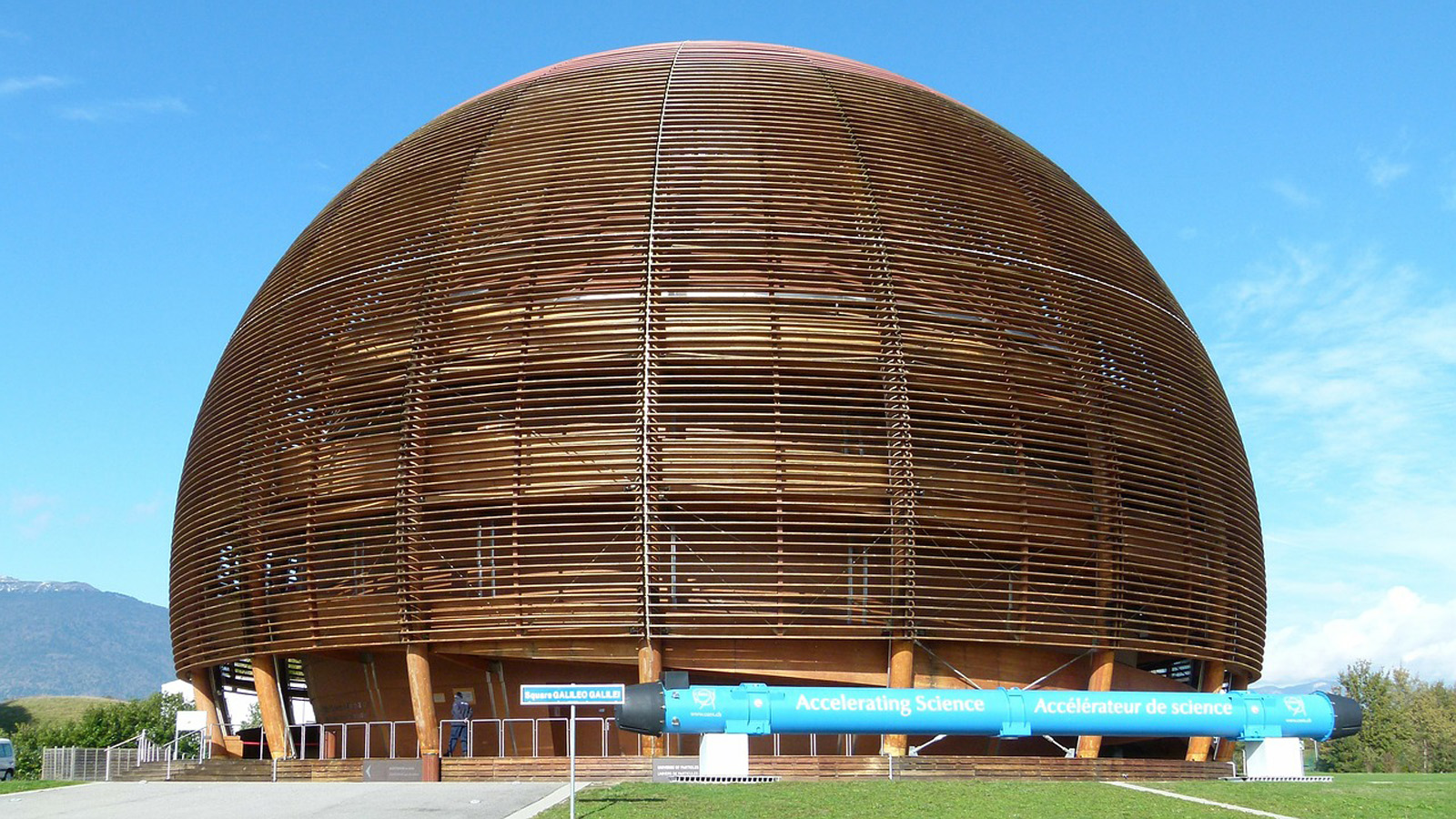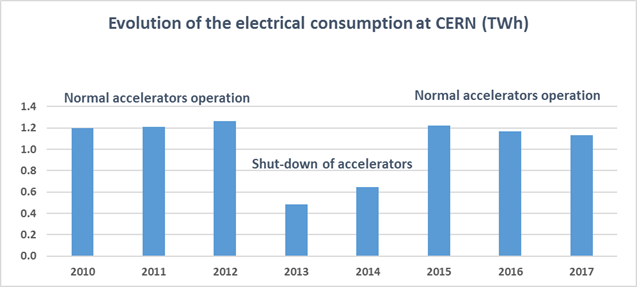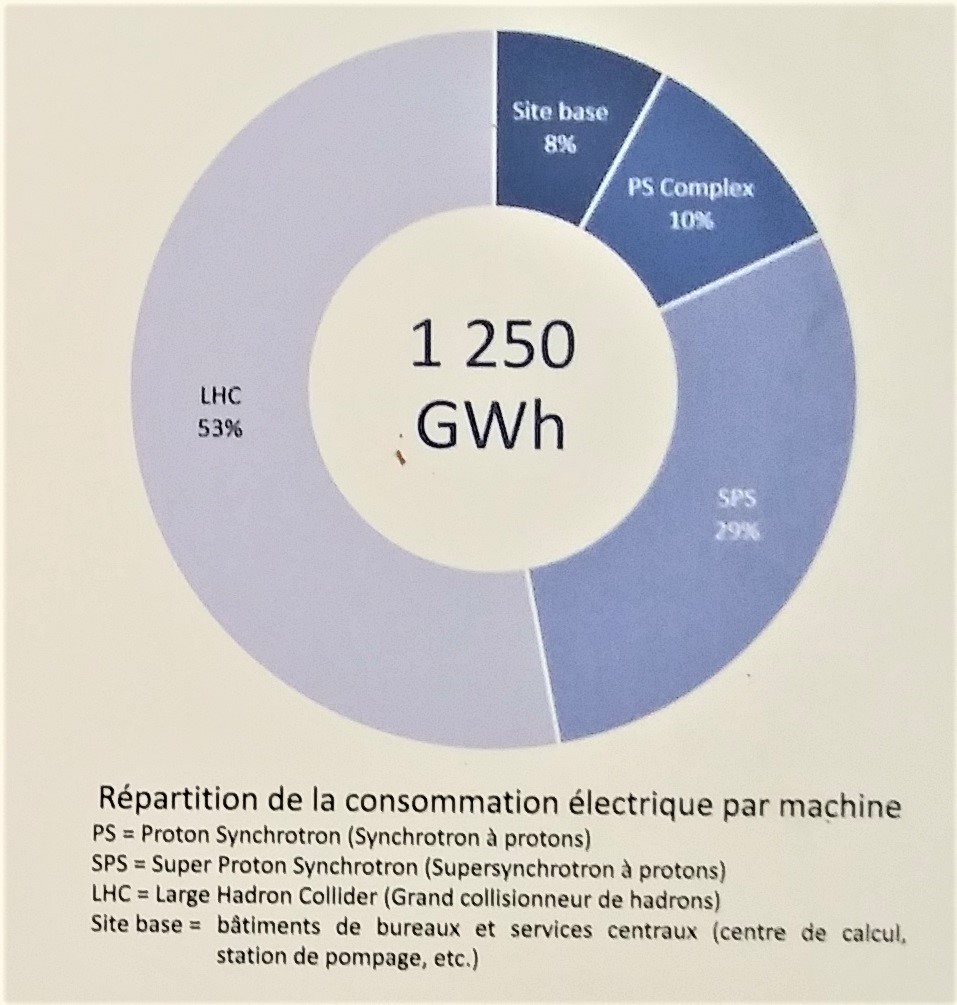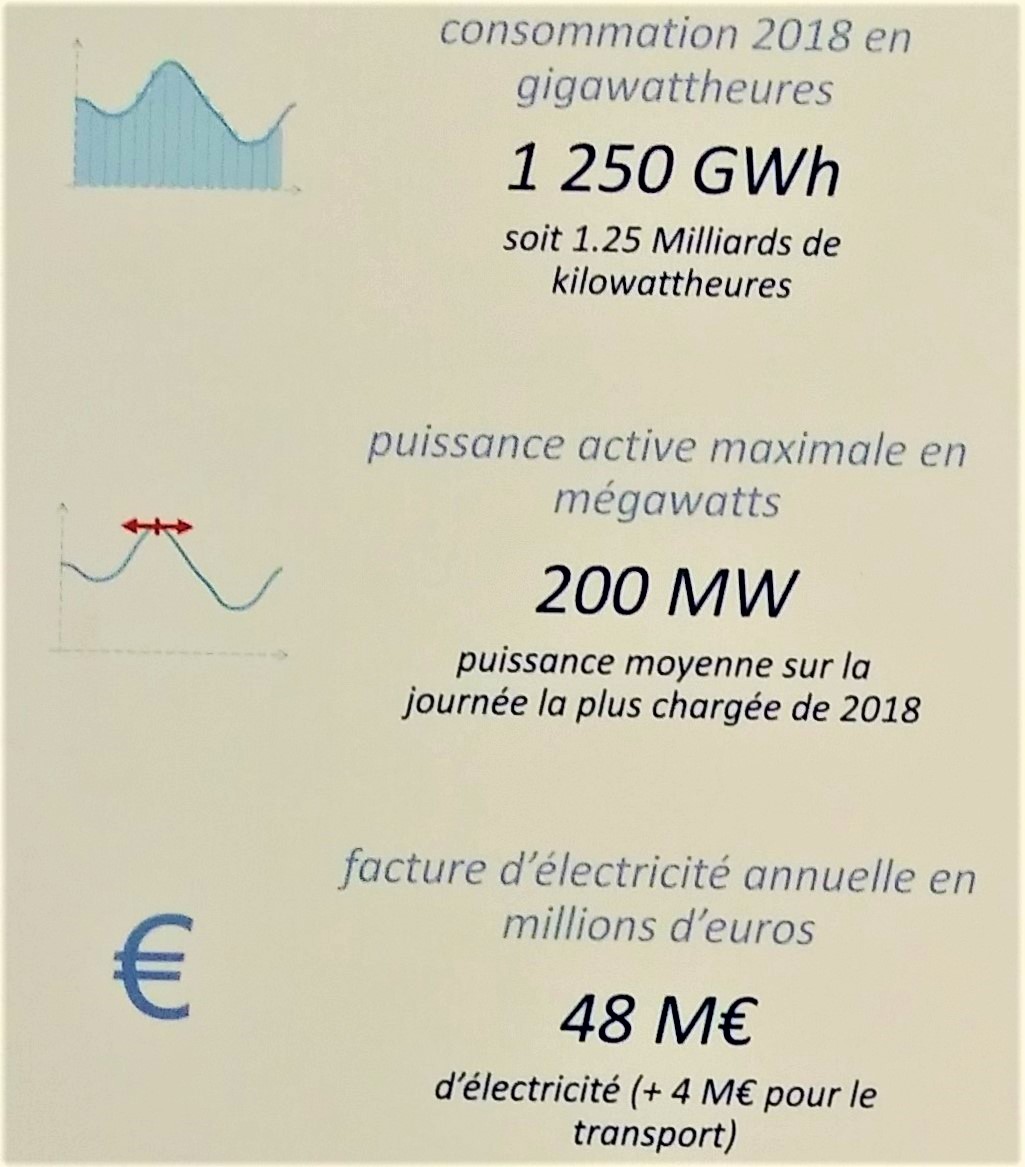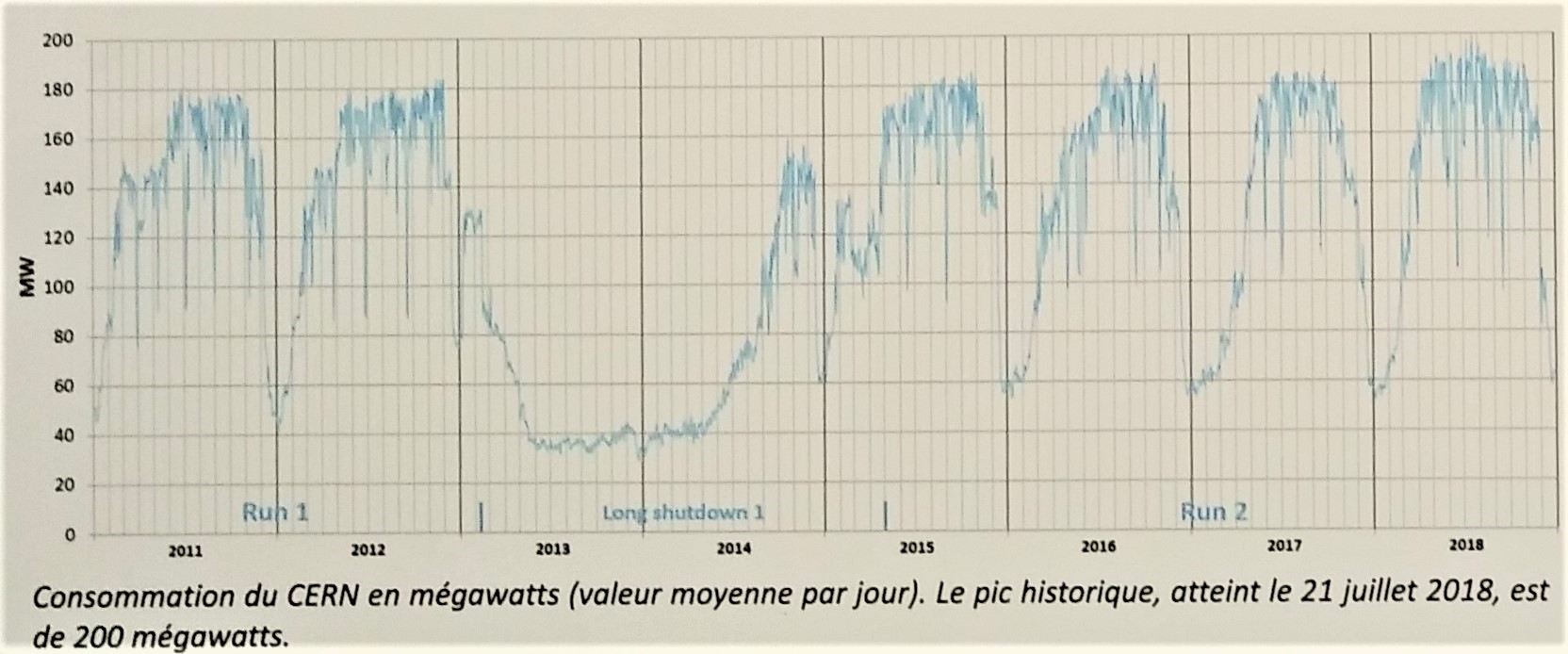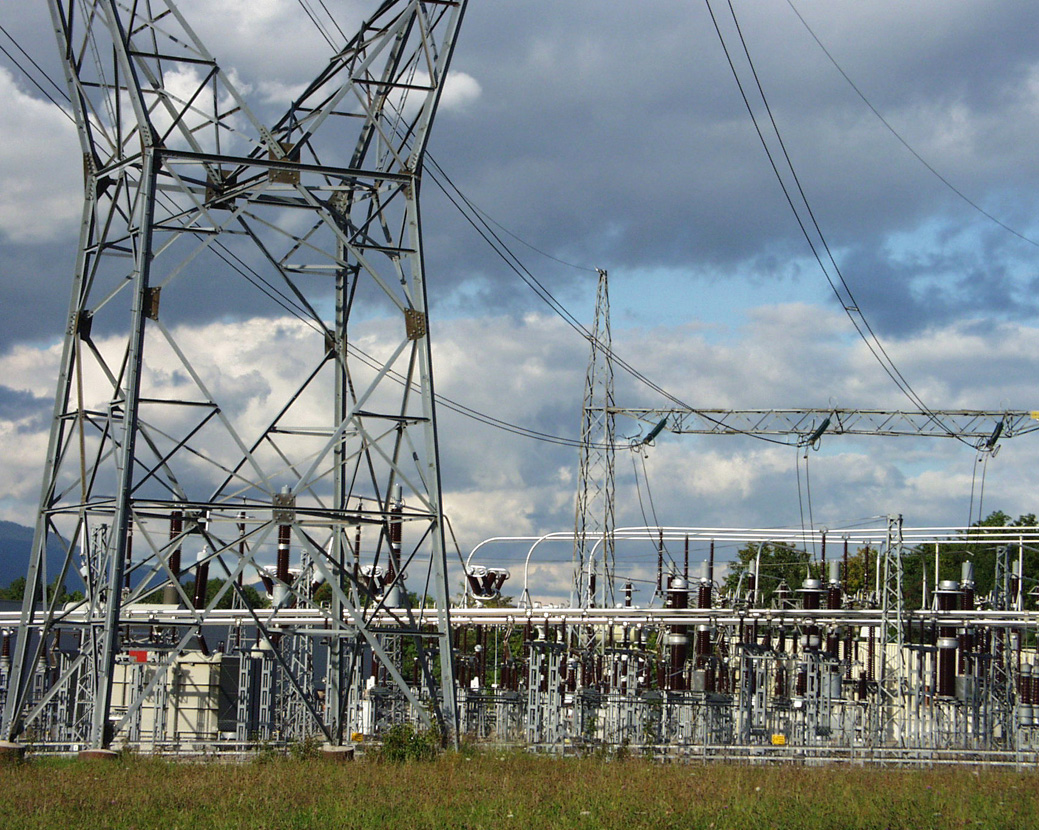Taking a closer look at LHC
|
Power. When the LHC is up and running the total average power for the whole CERN site will peak at about 200 MW (usually from May to mid-December), which is about a third of the amount of energy used to feed the nearby city of Geneva in Switzerland. If we include the base load for the whole site, the LHC contribution totals around 115 MW. During winter, when the accelerators are not running, CERN's total consumption drops to about 80 MW. Energy. Assuming 200 MW from May to mid-December, and 80 MW for the rest of the year: [200 x (7.5 x 30 x 24)] +[80 x (4.5 x 30 x 24)] Consumption ~ 1.3 TWh per year On average, the household electricity consumption in Spain is over 3500 kWh/year, so 1.3 TWh is enough power to fuel 370000 spanish homes for a year in Spain. In the next graphic we can see how the electricity consumption changes over a recent interval of 10 years.
The energy consumption depends on the specific year, and it needs changes from month to month, as the seasons shift and the experimental requirements are adjusted. Precisely, after this first Long Shutdown (LS1), upgrades will increase CERN’s annual electricity bill by 20% to €60 million (US$65 million). Anyway, about 90 % of the total consumption at CERN is linked to the operation of accelerators. In order to minimize energy consumption, energy efficiency criteria are integrated in new projects in compliance with the Host States' regulations.
Let's see some figures about the 2018 CERN Electrical Power Consumption:
CERN does not generate any of its own power, although it does have diesel generators as back-up in the case of power cuts to run essential services. When CERN was established in 1954, a substation on the Swiss side of the campus was enough to meet the electrical needs of the laboratory. Sixty years after that, CERN is powered from the French electrical grid through an overhead 400 kV line connected to the grid at Bois‐Tollot substation, close to CERN’s Prévessin site. This overhead line is owned by RTE, the French utility company operating the French transport grid. CERN has an energy supply contract with EDF. An additional connection from the Swiss electrical grid is used in case of emergency or during maintenance operations: this line at 130 kV is limited to 60 MVA (60 MW).
CERN's power substation at Prévessin in France (Image: CERN) These images and data have been taken from the that 2019 CERN Open Days information panels. |
|
AUTHORS Xabier Cid Vidal, PhD in experimental Particle Physics for Santiago University (USC). Research Fellow in experimental Particle Physics at CERN from January 2013 to Decembre 2015. He was until 2022 linked to the Department of Particle Physics of the USC as a "Juan de La Cierva", "Ramon y Cajal" fellow (Spanish Postdoctoral Senior Grants), and Associate Professor. Since 2023 is Senior Lecturer in that Department.(ORCID). Ramon Cid Manzano, until his retirement in 2020 was secondary school Physics Teacher at IES de SAR (Santiago - Spain), and part-time Lecturer (Profesor Asociado) in Faculty of Education at the University of Santiago (Spain). He has a Degree in Physics and a Degree in Chemistry, and he is PhD for Santiago University (USC) (ORCID). |
CERN CERN Experimental Physics Department CERN and the Environment |
LHC |
IMPORTANT NOTICE
For the bibliography used when writing this Section please go to the References Section
© Xabier Cid Vidal & Ramon Cid - rcid@lhc-closer.es | SANTIAGO (SPAIN) |



